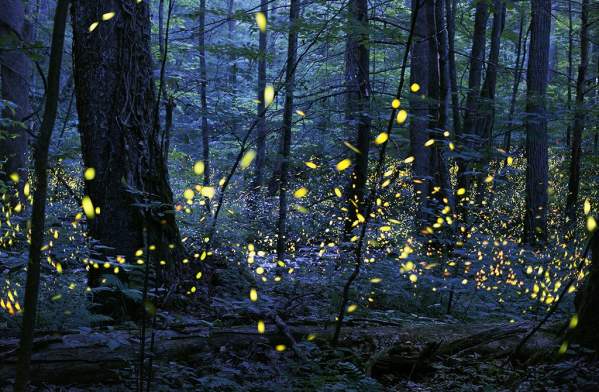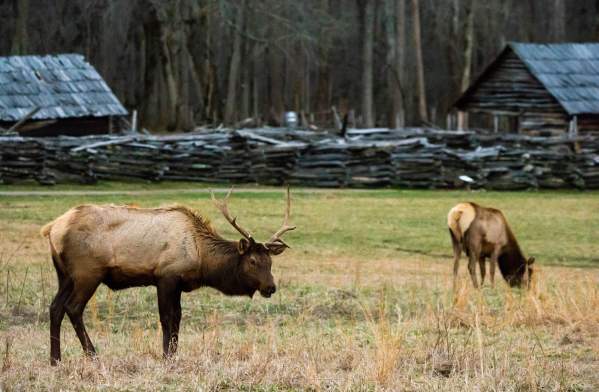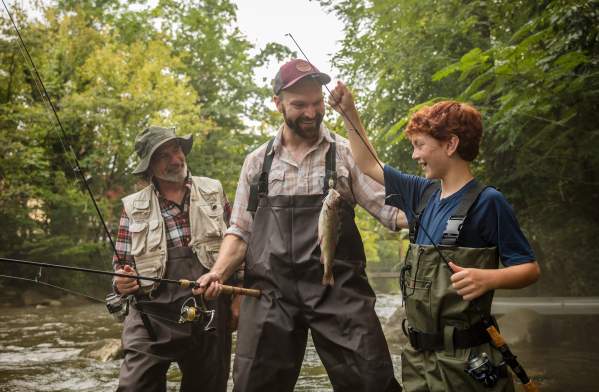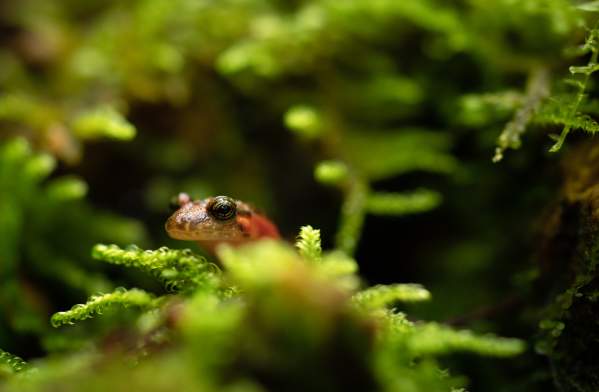Wildlife Viewing in Great Smoky Mountains
Great Smoky Mountains National Park contains some of the largest tracts of wilderness in the East and is a critical sanctuary for a wide variety of animals. Protected in the park are some 65 species of mammals, over 200 varieties of birds, 67 native fish species, and more than 80 types of reptiles and amphibians including the Salamander. The symbol of the Smokies, the American Black Bear, is perhaps the most famous resident of the park with approximately 1,500 bears live in the park. Of the 65 other mammal species documented in the park, the white-tailed deer, groundhog, chipmunk, and some squirrel and bat species are the most commonly seen. Endangered park animals include the northern flying squirrel, Red-cockaded Woodpecker, Indiana bat, spruce-fir moss spider, and the Smoky madtom.
Viewing wildlife in the Smokies can be challenging because most of the park is covered by dense forest. Open areas like Cataloochee and Cades Cove offer some of the best opportunities to see white-tailed deer, black bear, raccoon, wild turkey, woodchuck, and other animals. During winter, wildlife is more visible because deciduous trees have lost their leaves. Since many animals are most active at night, it can be advantageous to look for wildlife during morning and evening. It's also a good idea to carry binoculars and don't forget to scan the trees-many animals spend their days among the branches.
Will YOU Be Responsible for an Animal's Death?
Black Bears
Black Bears are an iconic symbol of Great Smoky Mountains National Park and a treasure to our community. While seeing a bear is a wonderful experience, it's important to always be bear aware....
Fireflies
Every year in late May to early June, thousands of visitors gather near the popular Elkmont Campground to observe the naturally occurring phenomenon of a firefly species that flashes...
Bird Watching
Bring your binoculars and your logbook, because there are over 240 species in the mountain woods and many birds native to Tennessee. You never know what you might see on a bird-watching vacation in...
Elk
Elk were essentially wiped out of the Eastern U.S. by the mid-1880s, but there is great news today. If you’re alert, you may come across some of the closely monitored elk, which were...
Fishing
Whether you’re new to fishing or an experienced angler, Gatlinburg and the streams of the Great Smoky Mountains are great places to cast a line. Take your fly fishing vacation in the Smokies and...
Salamanders
Great Smoky Mountains National Park has been called the "Salamander Capital of the World." Climatic and geologic factors have combined to spur the development of 30 salamander species in...










